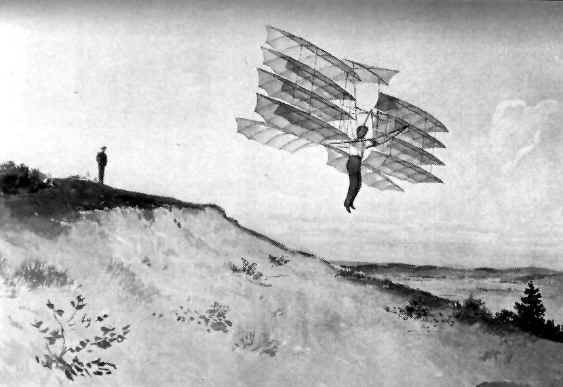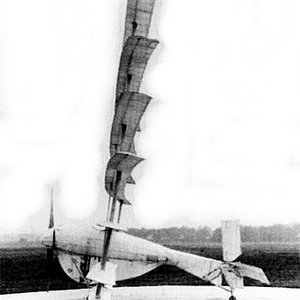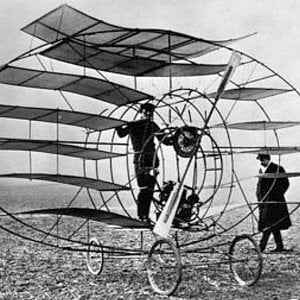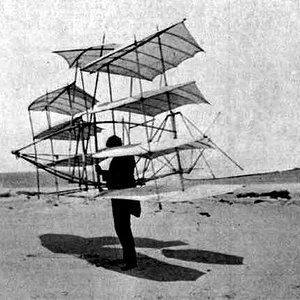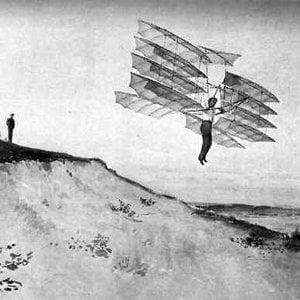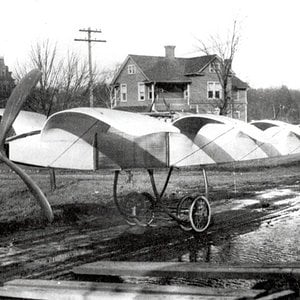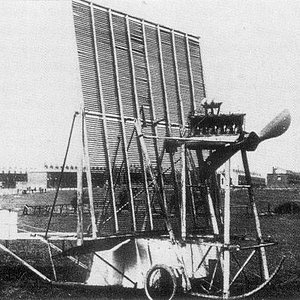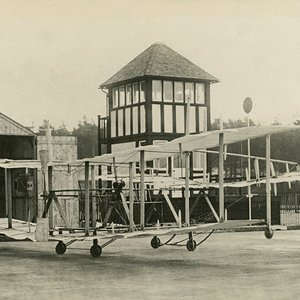Navigation
Install the app
How to install the app on iOS
Follow along with the video below to see how to install our site as a web app on your home screen.
Note: This feature may not be available in some browsers.
More options
You are using an out of date browser. It may not display this or other websites correctly.
You should upgrade or use an alternative browser.
You should upgrade or use an alternative browser.
Fig. 227 shows the multiple-wing machine as reconstructed. This consisted of the same wings and of a new frame, and instead of ordinary pivots, there were ball bearings at the ends of vertical wooden posts to which the roots of the wings were attached, the latter being all trussed together, with vertical posts and diagonal wire ties, this being probably the first application which has been made of the Pratt truss to flying machine design. The frame was all made of spruce, the surfaces were of Japanese silk varnished with pyroxelene; the complete machine weighed 33 1/2 pounds, the supporting surface at the front was 143 1/2 square feet, including a concave aerocurve over the top, added when the front wings were cut down to four pairs, and the rear wings or tail measured 29 1/2 square feet in area. With this arrangement a great many glides were made, with the result of more than doubling the lengths previously attained, of reducing the angle of flight to 1 in 5, or 10o to 11o, and of diminishing the required movements of the operator to one or two inches in preserving the equilibrium.

